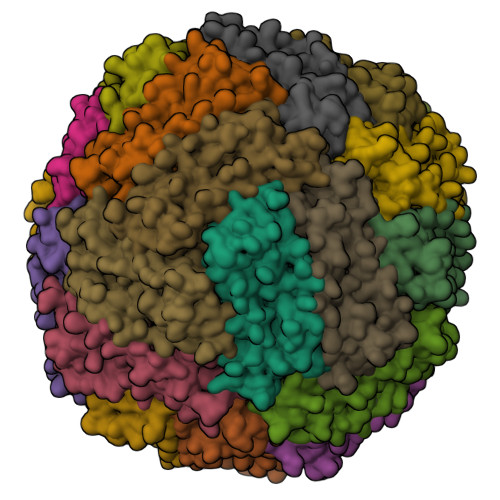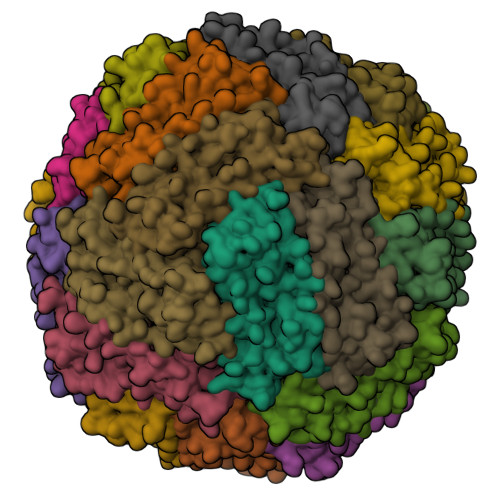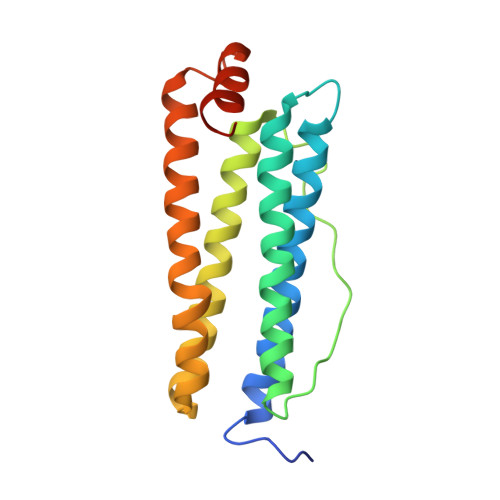Shape-Anisotropic Assembly of Protein Nanocages with Identical Building Blocks by Designed Intermolecular pi-pi Interactions.
Chen, X., Zhang, T., Liu, H., Zang, J., Lv, C., Du, M., Zhao, G.(2023) Adv Sci (Weinh) 10: e2305398-e2305398
- PubMed: 37870198
- DOI: https://doi.org/10.1002/advs.202305398
- Primary Citation of Related Structures:
8J9L, 8J9M, 8JAI - PubMed Abstract:
Protein lattices that shift the structure and shape anisotropy in response to environmental cues are closely coupled to potential functionality. However, to design and construct shape-anisotropic protein arrays from the same building blocks in response to different external stimuli remains challenging. Here, by a combination of the multiple, symmetric interaction sites on the outer surface of protein nanocages and the tunable features of phenylalanine-phenylalanine interactions, a protein engineering approach is reported to construct a variety of superstructures with shape anisotropy, including 3D cubic, 2D hexagonal layered, and 1D rod-like crystalline protein nanocage arrays by using one single protein building block. Notably, the assembly of these crystalline protein arrays is reversible, which can be tuned by external stimuli (pH and ionic strength). The anisotropic morphologies of the fabricated macroscopic crystals can be correlated with the Å-to-nm scale protein arrangement details by crystallographic elucidation. These results enhance the understanding of the freedom offered by an object's symmetry and inter-object π-π stacking interactions for protein building blocks to assemble into direction- and shape-anisotropic biomaterials.
Organizational Affiliation:
College of Food Science & Nutritional Engineering, Beijing Key Laboratory of Functional Food from Plant Resources, China Agricultural University, Beijing, 100083, China.

















